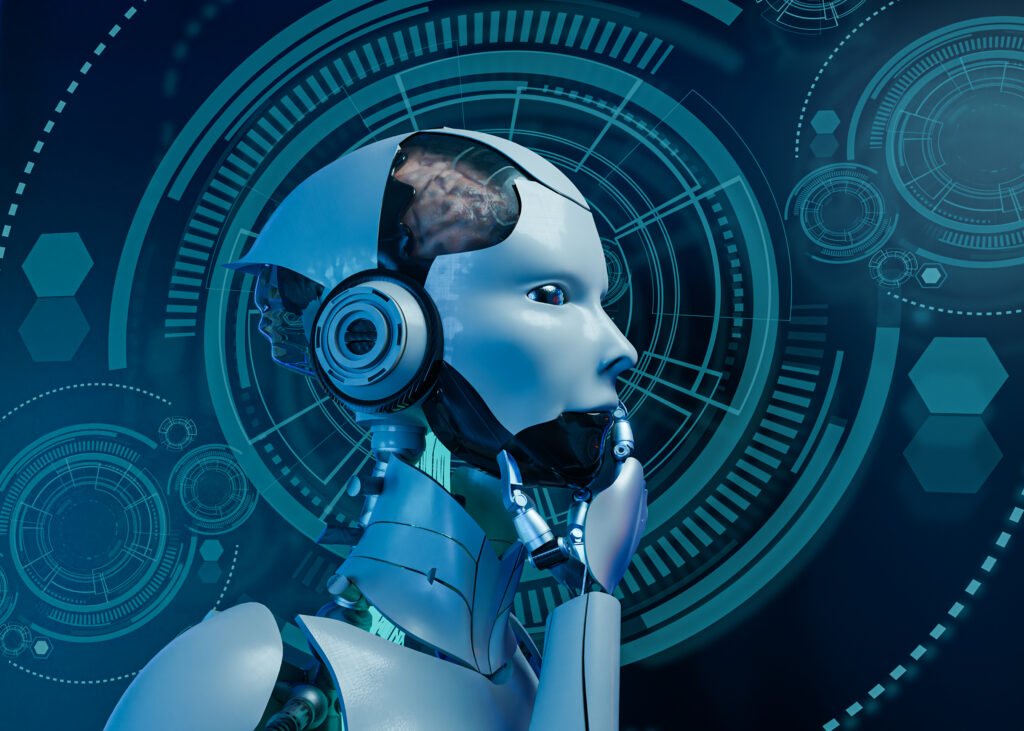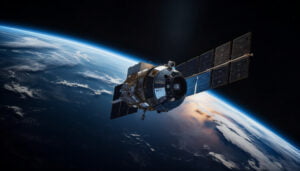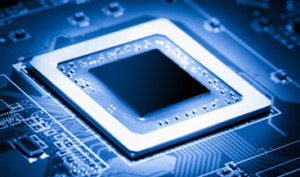Innovation is king in the rapidly changing industries of robotics and automation. Hardware and software distinctions are becoming increasingly hazy because of Field-Programmable Gate Arrays (FPGAs), which have become essential parts. Robots are now equipped with FPGAs, which enable real-time data processing, quick execution of sophisticated algorithms, and quick environment adaptation.
The purpose of this introduction is to set the stage for our thorough investigation of FPGA-based robotics. We will go through the fundamentals of FPGAs, their critical function in contemporary robotics, applications, algorithms, hardware platforms, and difficulties of FPGA-based robotics across industries.
Come along with us as we explore the transformative potential of FPGA-based automation and robotics.
FPGA Applications in Robotics
Field-programmable gate arrays (FPGAs), which enable a variety of applications that improve the functionality and effectiveness of robotic systems, have emerged as essential components in the field of robotics. We will examine some of the most important FPGA applications in robotics in this section:
A. FPGA-Based Control Systems
- Real-time Control: FPGAs provide the processing speed and determinism required for real-time control of robotic systems. They excel in tasks such as motor control, feedback loops, and ensuring precise, low-latency responses.
- Kinematic Control: FPGAs are used to calculate and control the kinematics of robotic arms and other moving parts, ensuring smooth and accurate movements in applications like pick-and-place operations.
B. Real-Time Data Processing with FPGAs
- Sensor Fusion: FPGAs can seamlessly integrate data from multiple sensors, including cameras, LiDAR, and ultrasonic sensors, in real time. This enables robots to create a comprehensive understanding of their environment for navigation and decision-making.
- Signal Processing: FPGAs are employed for real-time signal processing, particularly in tasks like speech recognition and natural language processing, enabling robots to interact with humans more effectively.
C. Sensor Interface and Integration
- Custom Sensor Interfaces: FPGAs allow for the development of custom interfaces for proprietary or non-standard sensors, expanding the range of sensors that can be integrated into robotic systems.
- Synchronization: FPGAs synchronize data from various sensors, ensuring accurate timestamping and alignment of sensor data for precise mapping and localization.
D. Motor Control and Actuation
- Efficient Motor Control: FPGAs optimize motor control algorithms, reducing energy consumption and enhancing the precision of movements, which is crucial in applications like autonomous vehicles and industrial robots.
- Closed-Loop Control: Closed-loop control systems, where feedback from sensors is used to adjust motor performance in real-time, are made highly efficient and responsive with FPGA technology.
E. Communication and Networking
- Network Protocols: FPGAs are used to implement custom network protocols, enabling efficient communication between robots and central control systems or other robots in a multi-robot environment.
- Data Compression: FPGA-based data compression techniques help in reducing the amount of data transmitted over networks, optimizing bandwidth usage in remote robotic operations.
FPGA-Based Algorithms in Robotics
Field-Programmable Gate Arrays (FPGAs) are powerful platforms for implementing a broad range of robotics-related algorithms. They are ideally suited for activities that require fast processing, real-time data analysis, and quick reactions because of their distinctive combination of hardware acceleration and configurability.
The use of FPGA-based algorithms in robotics and their practical applications will be discussed in this section.
A. Image Processing and Computer Vision
For image processing and computer vision applications in robotics, FPGAs are a common option. They are perfect for applications like object detection, tracking, and gesture recognition due to their parallel processing capabilities that enable quick analysis of picture data. FPGAs, for instance, can interpret video feeds in real-time in autonomous vehicles to recognize obstructions and lane markers, improving safety and navigation.
B. Path Planning and Navigation
For autonomous robots and drones, effective path planning and navigation are essential. Algorithms built on FPGAs can compute the best pathways faster while avoiding obstacles. Robots can navigate complex situations with accuracy and speed because to these algorithms, which use sensor data and map information to make judgments quickly.
C. Object Detection and Recognition
Many robotic applications, from industrial automation to home robotics, depend on object detection and recognition. Robots can recognize and interact with items in their environment thanks to the real-time execution of deep learning models for object recognition using FPGAs. This is crucial for pick-and-place and sorting activities in the manufacturing industry.
D. Machine Learning on FPGAs
Machine learning tasks like inference and training are increasingly being performed on FPGAs. Their parallel architecture speeds up neural network calculations, enabling robots to adjust and pick up new skills as they go. Enhancing the autonomy and adaptability of robots in dynamic environments requires this skill.
E. Examples of FPGA-Based Algorithms in Robotics
- SLAM (Simultaneous Localization and Mapping): FPGAs aid in real-time SLAM algorithms, allowing robots to create maps of their environment while simultaneously localizing themselves within it.
- Kalman Filtering: FPGAs facilitate high-speed Kalman filtering, a key technique for sensor fusion and state estimation in robotics.
- Control Algorithms: FPGAs enhance control algorithms for tasks like robotic arm manipulation, enabling precise and responsive movements.
- Voice and Speech Recognition: Robots with FPGA-based speech recognition algorithms can interact with humans through natural language, making them useful in customer service and healthcare applications.
FPGA Hardware Platforms for Robotics
In the field of FPGA-based robotics and automation, selecting the appropriate hardware platform is a crucial choice that can have a big impact on a project’s success. Robotic systems are constructed using FPGA hardware platforms, which provide a variety of features and functionalities to meet different application requirements. The following are the main facets of FPGA hardware platforms for robotics that will be covered in this section:
A. FPGA Development Boards
Roboticists and engineers who are starting FPGA-based projects frequently use FPGA development boards as their first step. These boards are suitable for experimentation and prototyping because they are furnished with FPGA chips, necessary peripherals, and programming tools.
Xilinx, Intel (formerly Altera), and Lattice Semiconductor are a few well-known producers of FPGA development boards. To meet the needs of various projects, these boards are often offered in a variety of sizes and layouts.
B. Custom FPGA-Based Robotic Platforms
Custom FPGA-based platforms are frequently developed for more specific or sophisticated robotic applications. These platforms can combine FPGAs, microcontrollers, sensors, and actuators and are adapted to the demands of particular projects.
Custom platforms offer more options for optimization and control but necessitate a better knowledge of FPGA design and integration.
C. Integration with Microcontrollers and Processors
FPGAs are routinely combined with CPUs and microcontrollers to build hybrid systems that make the most of the advantages of both technologies. High-level control, communication, and sensor interfacing are functions that can be handled by microcontrollers like Arduino and Raspberry Pi as well as application processors built on ARM-based devices.
On the other hand, FPGAs excel at hardware acceleration, high-speed control, and real-time data processing. Robotic systems using this combination are adaptable and strong.
D. Case Studies of Popular FPGA Platforms
To illustrate the practical use of FPGA hardware platforms in robotics, we will present case studies featuring popular platforms and their applications. These examples will showcase how specific hardware choices have influenced the performance and capabilities of robotic systems.
Challenges and Considerations
Field-Programmable Gate Arrays (FPGAs) have revolutionized robotics and automation, but their integration comes with a set of unique challenges and considerations. Addressing these challenges is essential to harness their full potential effectively.
A. Power Consumption and Heat Management
- Power Efficiency: FPGAs can be power-hungry, especially when running complex algorithms. Balancing performance with power efficiency is critical to ensure longer operation times and reduce overall energy consumption.
- Heat Dissipation: Intensive FPGA usage generates heat, necessitating efficient cooling solutions to prevent overheating, which can lead to component degradation and malfunction.
B. Development and Debugging Challenges
- Complexity: FPGA development is complex and requires specialized knowledge. Skilled engineers are needed to design and program FPGAs effectively.
- Debugging: Debugging FPGA-based systems can be challenging due to the real-time nature of applications. Ensuring the reliability and stability of the system during development is crucial.
C. Scalability and Flexibility
- Scalability: Adapting FPGA-based systems for different applications or expanding their capabilities can be challenging. The design may need to be modified significantly to accommodate changes.
- Flexibility: While FPGAs offer great flexibility, this flexibility can also be a drawback if not managed properly. Ensuring that FPGA-based systems can adapt to evolving requirements is vital.
D. Cost Considerations
- Initial Costs: FPGAs can be expensive to acquire and deploy, particularly when compared to off-the-shelf microcontrollers. Assessing the return on investment and long-term cost savings is essential.
- Maintenance and Upkeep: Over time, FPGAs may require updates, maintenance, or replacements. Factoring in these ongoing costs is necessary for budget planning.
Engineers and developers must create a balance between performance, power efficiency, and scalability in order to overcome these obstacles. To make sure that FPGA-based robotics and automation systems fulfill their intended goals and stay durable and economically advantageous throughout their operating lives, careful evaluation of these issues is important.
Future Trends in FPGA-Based Robotics and Automation
Field-Programmable Gate Arrays (FPGAs) have already expanded the possibilities for innovation and effectiveness in robotics and automation. But even more encouraging advancements in this fascinating sector are in store for the future. The following are some projected developments in robotics and automation using FPGAs:
A. Emerging FPGA Technologies
FPGA technology is still developing quickly. Future FPGAs are probably going to be smaller, more powerful, and more energy-efficient. This advancement will make it possible to create robotic systems that are much more advanced. FPGAs with increased logic capacity, quicker clock rates, and better support for mixed-signal processing are to be expected.
B. AI and FPGA Integration
A rapidly developing area is the symbiosis between artificial intelligence (AI) and FPGAs. FPGAs are particularly effective at speeding up AI workloads in computer vision, natural language processing, and reinforcement learning. We can expect a closer integration of AI algorithms and FPGA-based hardware in the future, leading to greater autonomous learning, adaptation, and decision-making capabilities for robots.
C. Edge Computing in Robotics
Robotics is increasingly relying on edge computing, which processes data locally on the device rather than at a far-off data center. Due to their real-time processing capabilities and minimal latency, FPGAs are perfect for edge computing. As robotics demands quicker decision-making and less reliance on cloud resources, resulting in more effective and responsive robotic systems, this trend is anticipated to expand.
D. Ethical and Legal Implications
Legal and ethical issues will become more important as FPGA-based robotics is incorporated into society. In autonomous systems, concerns about accountability, safety, and privacy will need to be addressed. To ensure responsible and secure deployment, standards and regulations are inevitably being developed for FPGA-based robotic applications.
Exciting developments are expected for FPGA-based robotics and automation in the future. In addition to representing scientific advancement, these trends offer chances to influence the moral and legal framework that surrounds these ground-breaking innovations. We predict a future when FPGA-based robots play an even greater role in revolutionizing industries and improving our daily lives as researchers, engineers, and policymakers collaborate.
Conclusion
A new era of innovation has been sparked by the combination of robotics and automation with Field-Programmable Gate Arrays (FPGAs). This combination improves accuracy and efficiency across industries while providing answers to a variety of problems. Our research has revealed the crucial function of FPGAs in real-time data processing, cutting-edge algorithms, and customizable hardware.
Future advancements are anticipated to be much larger thanks to the development of FPGA technology and deeper integration of artificial intelligence. But ethical issues and legal frameworks must advance simultaneously.
Finally, robotics and automation based on FPGAs are excellent examples of the dynamic convergence of hardware and software, enabling robots to become cognitive collaborators. Responsible development and collaboration will help to design a future where technology transforms industries and improves human experiences as we continue on this innovation journey.












